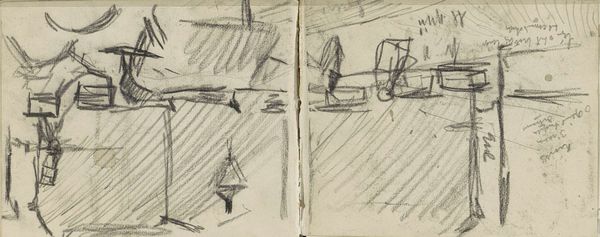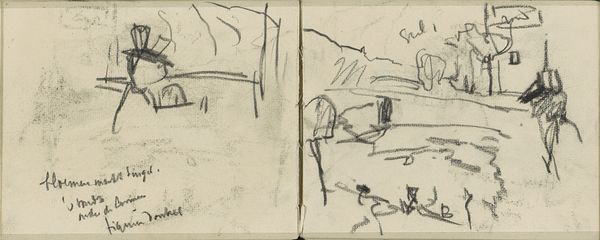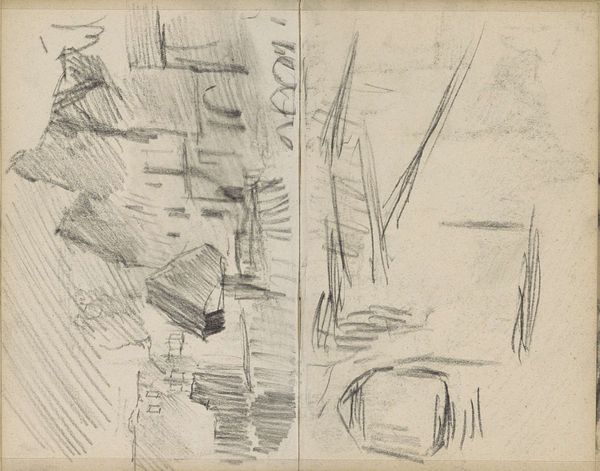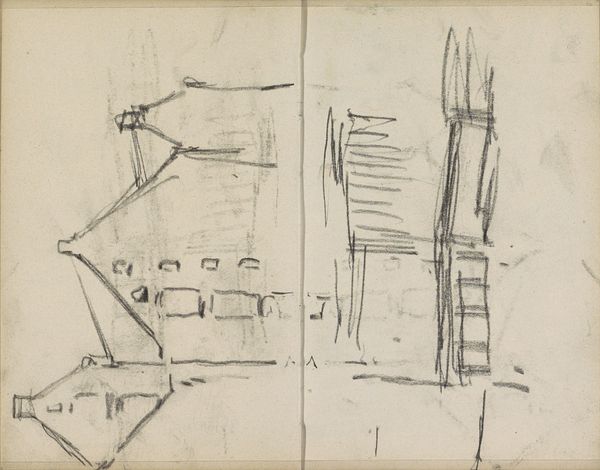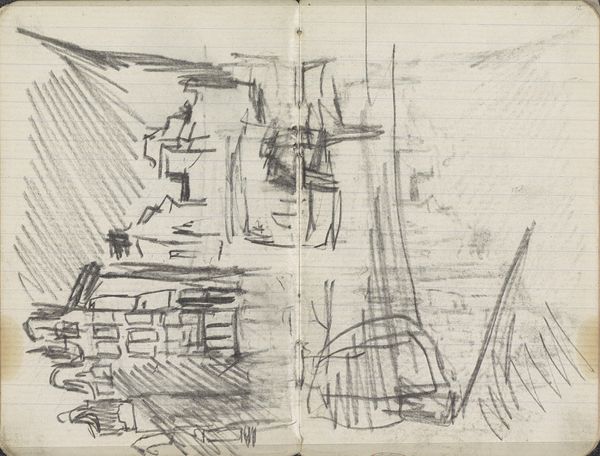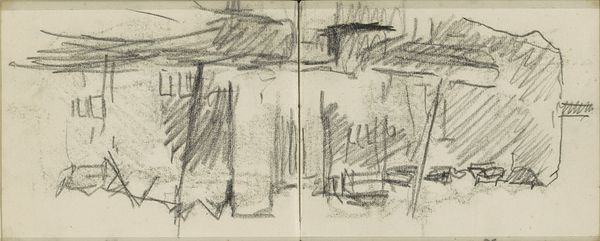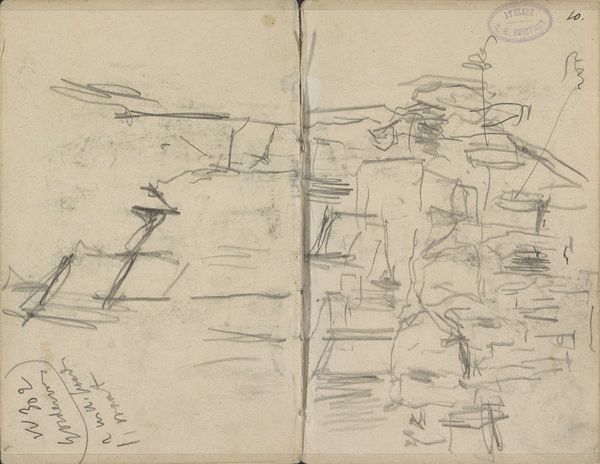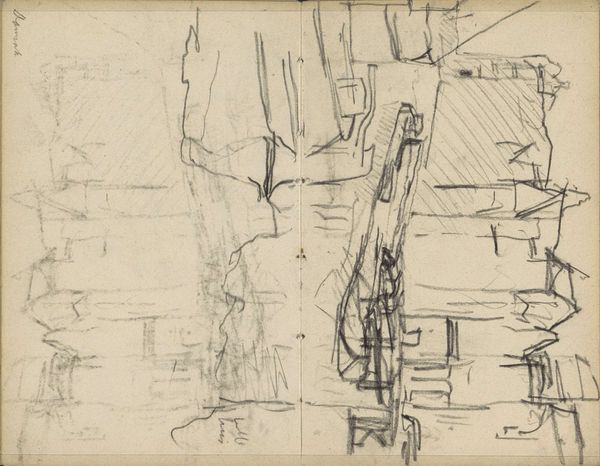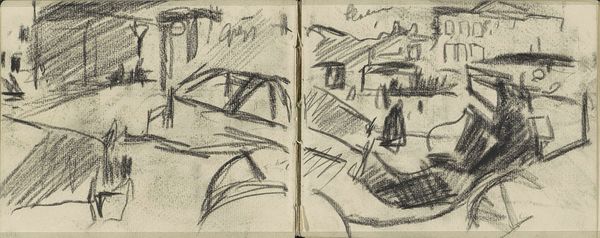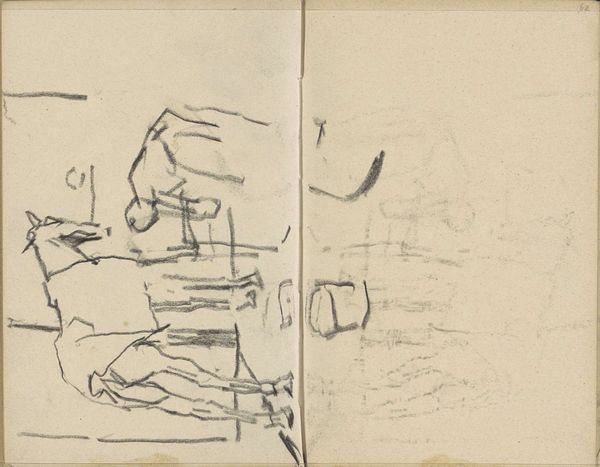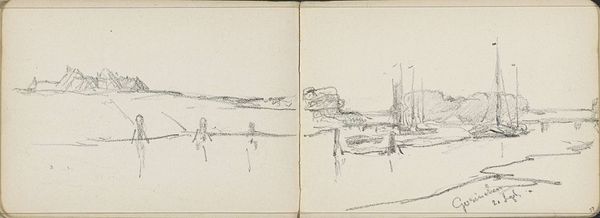
Gezicht op het Damrak te Amsterdam bij avond c. 1893s - 1903s
Copyright: Rijks Museum: Open Domain
Editor: So, here we have George Hendrik Breitner's "Gezicht op het Damrak te Amsterdam bij avond", a pencil and ink drawing dating from around the 1890s to early 1900s. There’s something really raw and immediate about this sketch. It's so sparse. What do you make of it? Curator: It’s a whisper of a moment, isn't it? Like catching a fleeting thought. Breitner's sketches are really glimpses into his artistic process, like finding a loose page from his diary. Look at how he uses those quick, almost frantic lines. It feels like he’s trying to capture not just the *sight* of Amsterdam at night, but the *feeling* of it, you know? Editor: I do. The rapid strokes do feel emotional. Do you think it tells us much about Amsterdam at that time, or is it just Breitner's personal impression? Curator: I think it's intertwined, like colours in a tapestry. The Damrak was, even then, a place of frenetic activity. He zeroes in on that atmosphere, the burgeoning modernity, with what almost seems like impatience. But you can almost hear the clatter of the city, and sense the haze. And those scribbled annotations – almost like a secret language. Do you get the feeling of the modern spirit that the Impressionists talked about so often? Editor: Definitely. It’s more suggestive than descriptive. Looking at this makes me consider what the point of capturing an image is in the first place. Curator: Isn’t that fantastic? To be reminded, through a seemingly simple sketch, that art is not always about perfect replication. Sometimes, it's about hinting at the soul of a place or moment. Like catching a falling star in a jar. Editor: That's lovely. Thanks, I hadn’t thought of it like that. It's exciting to realize this tiny sketch holds such depth.
Comments
No comments
Be the first to comment and join the conversation on the ultimate creative platform.
